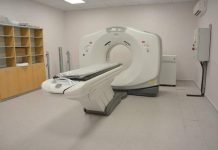What do Physiotherapists do?
I’ve been wanting to answer these questions for a while now ;
WHY DO PHYSIOTHERAPIST LEARN SO MUCH IF ALL THEY DO IS TOUCH?
ARE THEY LIKE MASSAGE THERAPISTS??
Well, take a seat and open your mind :
Hi, I am a Physiotherapist.

I promise not to talk about the fact we had both clinical and social science classes for 5 years. Oh! Those formative years moulded us into these wonderful budding Physiotherapists we are now. But I’d tell us how unique our profession is.
First, you need to know that there are several specializations within the scope of Physiotherapy: Orthopedics, Pediatrics, Neuromedicine, Neurosurgery, Cardiopulmonary, Geriatrics, Womens’ health, and Sport Medicine. Each specialty has different techniques and principles it uses in rehabilitating patients.
Massage! Hmmm! That therapeutic procedure that every lay man only know us to be performing, has different types.
Massage techniques are commonly used by orthopedic physiotherapists depending on the indications for it, which most times are pain and swelling. These techniques, however are one out of hundreds of research-based techniques used by this specialty let alone other pain relieving and treatment procedures used in other specialties.
What I do might look simple on the surface but its really not! Now let me break down one of the most common indications patient get referred for: “Mobilisation out of bed.”
Sounds simple right? Stand up and walk (lol).
You should know that I’m not going to do that if patient have a; Mean arterial pressure: <65 or >110, BP: >200 mm Hg for systolic or >110 mm Hg for diastolic, HR: <40 or >130 requiring temporary pacer, administration of a new pressor e.g. inotropes agent, acute or unstable cardiac status, dysrhythmia requiring new medications active cardiac ischemia, unstable rhythm, Pulmonary embolus, Deep venous thrombosis, except (low molecular weight heparin is given); If a patient is on any other form of anticoagulants (e.g. IV heparin) so I can monitor the patient for changes in pain, swelling, colour and sudden shortness of breath, SpO2: <88% or undetermined cyanosis. RR: <5 or >40, FiO2: >60%, uncontrolled asthma, Severe agitation, distress, increased ICP and unstable fracture.
Wow! Endless list!
So incase you see me next time being thorough, asking for FBC, EuCr, D-dimer, INR, Prothombin time, X-ray, ECG report, and so on, or I have my stethoscope around my neck, I AM JUST DOING MY JOB (not trying to take someone else’s job).
This is just one indication friends.
Let me not even start with “pain” and how that systemic conditions can present with musculoskeletal pain and you’re meant to figure that out. Well, now you know why I took extensive pathology classes.
Ohh wait! I almost forgot how psychosocial factors precipitate symptoms and you’re meant to figure that out too? Oh yes that explains my abnormal psychology classes…
I am a PHYSIOTHERAPIST.
I know my Job
Do you know yours?
Abass.
























